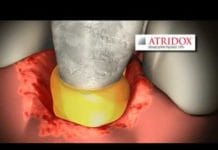The art of a meaningful conversation depends solely on listening. How often are you truly listening to dental patients? The majority of people do not listen with the intent to understand; they listen merely with the intent to reply. Let that sink in. Is that you? If so, read on.
Communication is the most important element of successful dental practices. This skill is not just speaking and writing; dental professionals often forget that one of the most important parts is listening. Listening is hard work and requires concentration. Purposeful communication does not come naturally and needs to be practiced and perfected to create professional teamwork and the great patient relationships required for positive outcomes.5 An intentional effort on your part is essential in order to be a good listener. Easy? Not so much.
The average person only listens at about 25% efficiency. Don’t let that be you! Listening takes practice and is characterized by an increased heart rate, quicker circulation of the blood, and a small rise in body temperature.1 We can process information four times faster than a person speaks. The average person is capable of speaking 125 words per minute. Our brains process up to three times more quickly (up to 500 words per minute). An active, effective listener will use the extra processing time to not merely hear the speaker’s words but also to process the words, distinguish key points, and summarize them.3
By using eye contact and responsive body language, you will be more involved directly and collect more information during the conversation. Do your very best to keep distractions to a minimum. In today’s fast-paced world, distractions are constant as we try to juggle many tasks at once. It is easy for the mind to wander.
As you are conversing, make a cognitive effort to process exactly what is being portrayed so when it is your turn to respond, you can do so respectfully and meaningfully. This creates a genuine experience for all parties to the conversation. Summarize what you just heard in your own words to reiterate what was just expressed, and then ask if your summary was correct. This helps create value in their words and confirms that you were, indeed, truly being a good listener. A verbal summary forces you to remember and recall, showing the other side that you are trying to comprehend.
Think for a minute about the conversations you encounter every day. How many meaningful conversations do you have that require active listening? Active and empathetic listeners are good at initiating and maintaining conversations.4 I’m talking about sincere conversations where you are not thinking about what you are going to say next but intently listening to the other person. Recognizing that the conversation is more about your patient than you is vital to being a successful active listener. This is especially important in situations where there is distress (such as at a dental office).
Listening to Dental Patients
Now let’s put that into perspective in a clinical setting. Do you listen to our patients with intent? Are you present in the conversation and active and empathetic in your responses?
Clinicians who focus on listening with intent can more easily ask powerful and open-ended questions to engage and empower patients to help solve their own dental problems, finding a solution suitable for them. Patients sometimes need guidance to determine their unique values and beliefs relative to their dental health.
Try using clarifying questions such as:
- Tell me a little about your dental health goals.
- Why do you feel that way?
- How could we make cleaning between your teeth fit into your daily routine?
The goal of these clarifying questions is to get your patients to self-identify their goals and values. We can help to navigate solutions once the patient has identified their values. This allows the patient to be more apt to want the presentation of possible solutions to uphold their values. In turn, if they identify the need themselves, they are much more likely to adhere to professional recommendations and follow through with the completion of the proposed treatment.2 By actively listening, you can empower patients to help solve their issues ─ but only if they have perceived value.
Tailor Responses to Active Listening
Be patient with your responses. Remember to listen with intent. To best serve our patients and provide the very best care possible, clinicians should remember the principles of active listening:3
- Neutral and nonjudgmental
- Patient (periods of silence are not “filled”)
- Verbal and nonverbal feedback to show signs of listening (For example, smiling, eye contact, leaning in, mirroring)
- Asking questions
- Reflecting on what is said
- Asking for clarification
- Summarizing
Remember how important active listening is in your daily conversations ─ whether with family, friends, strangers, or patients. Do not be in a hurry to voice your own opinion or response. You will not become a perfect active listener overnight. Practice and persistence are required to make this feasible.
People don’t care what you know until they know how much you care. You can prove that you care and create immense value by having an engaging, meaningful conversation.
Before you leave, check out the Today’s RDH self-study CE courses. All courses are peer-reviewed and non-sponsored to focus solely on pure education. Click here now.
Listen to the Today’s RDH Dental Hygiene Podcast Below:
References
- Hunsaker, P.L., Alessandra, T., Alessandra, A.J. The New Art of Managing People, Updated and Revised: Person-to-person Skills, Guidelines, and Techniques Every Manager Needs to Guide, Direct, and Motivate the Team. Simon and Schuster Inc; New York NY, USA: 2008.
- Jones, J.E., Pfieffe, J.W. The 1974 Annual Handbook for Group Facilitators.San Diego, CA: Pfieffer; 1974. Small Group Instructor Training Course (SGITC). 1998. By U. S. Army.
- Nichols, R.G. (1957). Listening is a 10-part skill. Enterprise Publications. p. 9. Retrieved from https://www.listen.org/Resources/Documents/Nichols10PartSkill.pdf
- Topornycky, J., Golparian, S.Balancing Openness and Interpretation in Active Listening.Collected Essays on Learning & Teaching. 2016; 9: 175-184.
- Tennant, K., Long, A., Toney-Butler, T.J. Active Listening. (2021, May 8). StatPearls. Treasure Island (FL): StatPearls Publishing; 2021 Jan. retrieved from https://www.ncbi.nlm.nih.gov/books/NBK442015/











